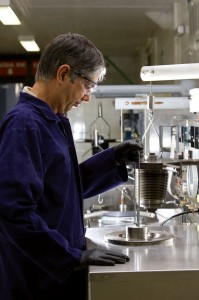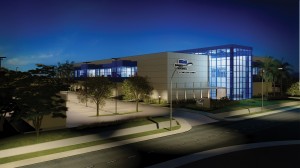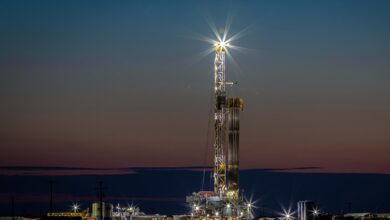E&P boom triggers growing pains in Brazil

Expansion projects under pressure as companies face shortage of experienced natives, local content laws
By Katie Mazerov, contributing editor
Poised to become the largest single offshore market in the world, Brazil is undergoing a major boom cycle, with multinational operator Petrobras leading the way. The company has a reported investment of more than $224 billion over the next five years. It also announced earlier this year that it had awarded seven contracts for newbuild deepwater rigs to Brazilian shipyard Estaleiro Atlantico Sul (EAS) and was in the bidding process to award 21 more.
The aggressive program is in line with Petrobras’ 2008 announcement to add 40 newbuilds to its fleet; bids for 12 were previously awarded to existing drilling contractors. Bolstered by the massive presalt discovery in 2006, Brazil’s oil production is expected to exceed 5 million bbl/day by 2020.
“I don’t doubt the ability and willingness of Petrobras to move ahead with its plans,” said John Keller, vice president and oilfield services research analyst at financial services firm Stephens Inc. “Rigs currently deployed are targeting less than 30% of the country’s identified offshore reserves, which would imply potential for a lot of growth going forward. It will be measured growth but still favorable for 2012.”
The offshore industry is stimulating the entire Brazilian economy, with major operators and services companies establishing centers of operation.
But with that growth comes a host of challenges. “There are a multitude of forces at work in Brazil,” said Nicholas Stocker, regional director, Latin America for NES Global, which provides engineering services and specialist staff support for the energy industry worldwide.

Effects of expansion
NES Global’s clients in Brazil have been requesting personnel in the hundreds rather than tens, an indication of how stimulated the market is. “The effects of the expansion are being felt all along the supply chain, from servicing vessels and oil service companies, and for operators potentially partnering with Petrobras,” he said. “Placed alongside Brazilian president Dilma Rousseff’s Accelerated Growth Program, which is looking at massive infrastructure improvements in terms of highways, rail lines, power generation and water management, it is all pointing to a serious lack of engineering expertise in the country.”
Add to that stringent local labor practices, local content laws governing the importation of workers and a cumbersome work visa program, the pressures placed on the manpower needs are only increasing. “Brazil is traditionally an agricultural country with great disparities between rich and poor,” Mr Stocker said. “But it has become a melting pot of challenges and opportunities.”
Stringent labor laws governing minimum-wage workers place significant social costs on companies looking to hire local workers for the anticipated ramp-up in business. “An employer will pay an extra 70% on top of an individual’s salary to employ him under Brazilian labor law,” Mr Stocker explained.
At the same time, local content regulations, governed by Brazil’s National Agency of Petroleum (ANP), require that a certain percentage of a project be serviced by Brazilian companies, from the shipyard down the entire chain. Companies that bring in experienced workers from abroad pay hefty importation-of-service taxes as high as 51%. In addition, work visa processing times can take up to 40 days.
Shortage of engineers
The local content stipulations are having the added impact of making delivery of major projects challenging in terms of both time and quality, in part because of the ratio of low number of local engineers to project needs, Mr Stocker explained. As an indication, while Brazilian universities graduate 40,000 engineers per year, China and India each graduate well over 100,000. Project delays necessitate importing more expertise, which then impacts profit margins.
From a fabrication standpoint, rig and platform production delays have been as long as 5 months to 17 months. However, local shipyards are proving their ability in ongoing construction projects for eight new rigs, Mr Stocker added. “The local content laws versus the shortage of engineering capability locally and massive demand make this a complex scenario,” he said. “For every person outsourced, the cost is roughly 2 to 2 ½ times the salary of a local hire. The country is going to have to graduate more engineers, but they will need to quickly gain the experience required for working in the ultra-deepwater fields of Brazil.”
In the meantime, Mr Stocker foresees reviews on existing regulations, and lobbying efforts calling for a relaxation on some importation service charges for high-level technical engineers with specific skill sets to keep projects on track.
Oil sector reforms that govern the huge presalt provinces are bogged down in the Brazilian Congress. Of concern is the issue regarding the 30% stake Petrobras will have to hold in each project, Mr Stocker said. Some in the Brazilian government want to ensure that Petrobras retains operator status in all presalt projects.

“For operators partnering with Petrobras, that would mean a lower stake in some very lucrative projects, sharing in the production costs with reduced return,” he explained. Other oil industry insiders believe that, unless the government moves to attract foreign investment, Petrobras could become overextended financially and won’t be in a position to get projects on track.
Baker Hughes, which has an office in Rio de Janeiro and its operational hub in Macaé, is seeing market challenges for personnel and equipment. The market growth is very attractive for foreign companies on the leading edge of technology, including major service companies, as well as smaller players, said Wilson Lopes, geomarket sales director for the company’s Brazil region.
Unprecedented growth
“The country is undergoing a significant growth trend, unlike anything seen here before,” Mr Lopes said. “This is a highly demanding environment that is requiring technical leadership. The challenges of the pre-salt discoveries, which are in ultra-deepwaters and up to 300 km off the coast, will push the technology to new limits. From a technical standpoint, this environment is more challenging than the Gulf of Mexico. That translates to attracting the right people from various sectors of the industry and training them so they are ready and able to support the level of activity.”
Baker Hughes has more than 2,000 employees in the country, a mix of local workers (94%) and imported technical specialists. “There is significant competition for qualified personnel,” Mr Lopes said. “The fact that the operators also have a gap in human resources makes the situation even more difficult.”
Worldwide demand for equipment and tools, especially in other deepwater markets, will make that situation very competitive if growth rates continue at their current rate. “Right now, we are supporting about 25 offshore rigs, and we’re expecting that number to increase 20% over the next 12 to 18 months. We are investing in rental tools and equipment,” Mr Lopes said.
Companies are putting resources toward plans to ensure operational and cost efficiency, development of technology, infrastructure investments and well testing, Mr Lopes said. “There has been a major effort by all companies involved, including Petrobras, to push this prospect forward,” he noted. “Day by day, we are seeing significant research and development of technology on the production side to apply what we know to lower the risks and make this challenging arena an attractive prospect.”
Among other initiatives, this year Baker Hughes inaugurated the Rio Research and Technology Center (RRTC), an advanced applications engineering and research facility located in the Technology Park of the Federal University of Rio de Janeiro, close to Petrobras’s Cenpes facility. It will eventually house more than 100 scientists and technicians when fully operational.
A well test an development facility was also opened this year in Macaé, designed to test electrical submersible pump (ESP) systems prior to installation. ESP technology is crucial for enhancing production in the ultra-deepwater and heavy-oil reserves, Mr Lopes said. The facility has capabilities for system integration tests and simulation for ESP systems capable of handling up to 86,000 bbls/day of fluid and maximum surface pressures of 5,000 psi. The facility’s control room displays real-time data, including flow rates, temperature, torque, pressure, vibration and electrical parameters.




